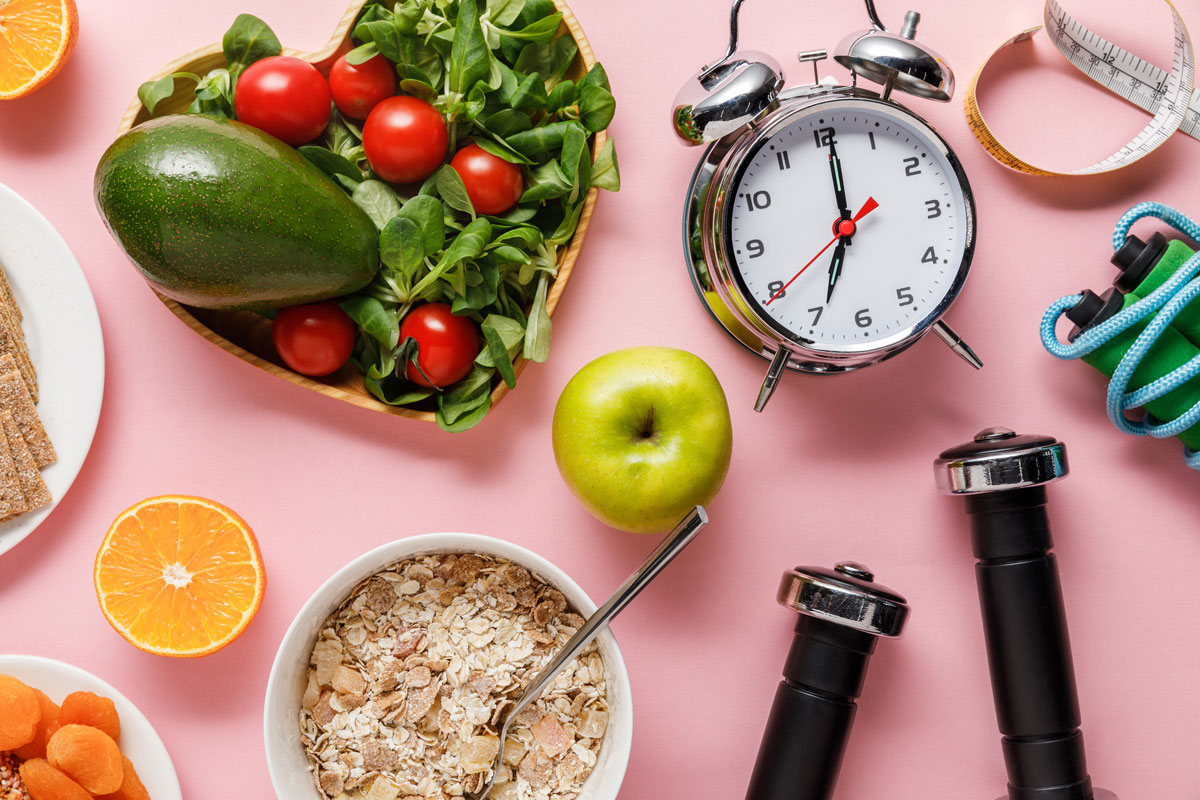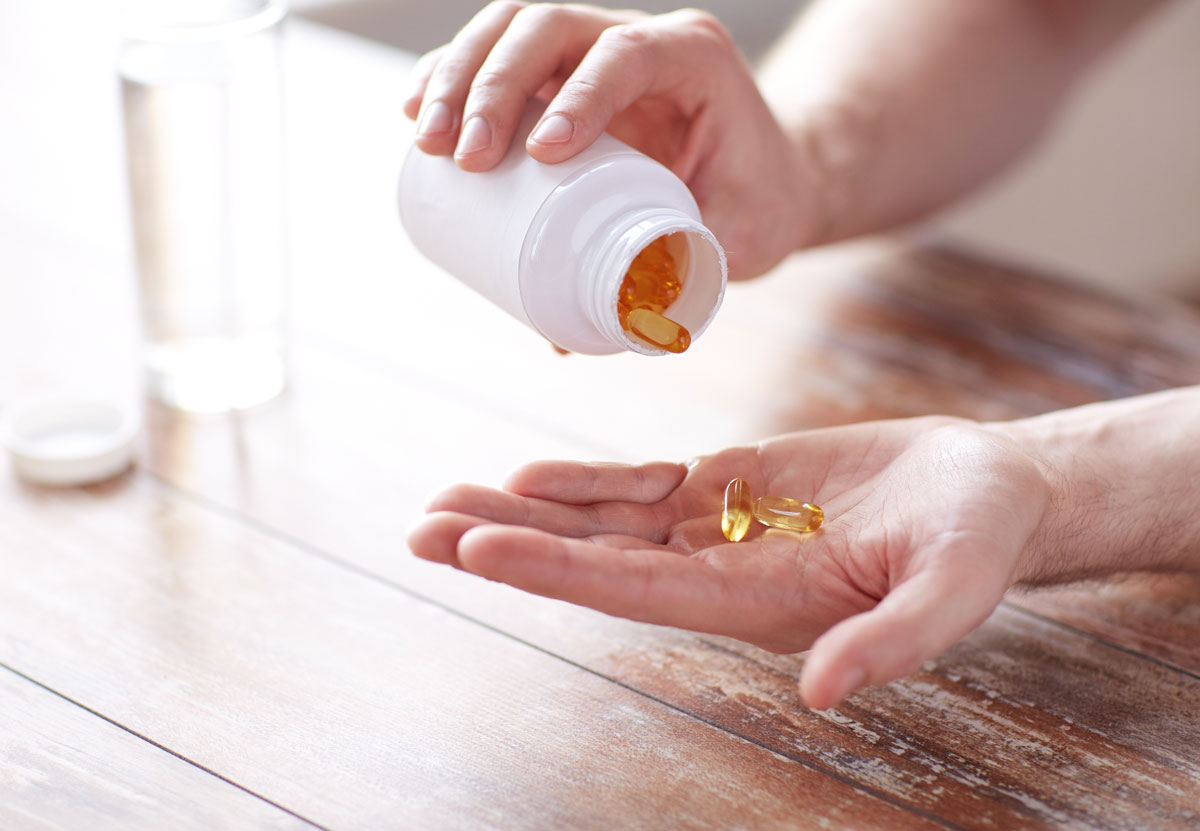Why am I Gaining Weight Despite Diet and Exercise? │ QA
If you’re careful with your nutrition, working out weekly, and still experiencing problems with your weight, take a moment to read this QA.


I have begun Menopause and have been gaining weight and having bad hot flashes. Is there anything you can suggest I do?
Thanks,
– Lisa D.

Every woman will eventually reach the stage of menopause and the ovaries cease production of estrogen. (sigh) The transitional time, termed perimenopause, may take several years. Nutritionally, managing these stages involves responding to changing hormones and influencing energy balance.
The Physicians Committee for Responsible Medicine recommends a low-fat, vegetarian diet for women who are experiencing hot flashes. EndocrineWeb encourages “filling your meals with plenty of whole grains, fruits and vegetables.” Adequate protein is needed to support muscle-protein synthesis, with intake spread across the day. In regards to supplements, WebMD indicates that black cohosh, St John’s wort and flaxseed may help manage menopause symptoms.
Creating an energy deficit is necessary for weight loss, which can come from curbing caloric intake or boosting output. Regular exercise to the tune of 60 minutes daily also helps, particularly if it includes strength training to retain lean body mass.
Resources:
M Jacobsen. Midlife Nutrition — Helping Women Over 40 Overcome Nutrition Challenges, Today’s Dietitian March 2014 Issue Vol. 16 No. 3 P. 30
Pinkerton, JoAnn. “MenoPause Blog.” MenoPause, 2018, www.menopause.org/for-women/menopause-take-time-to-think-about-it. Accessed 8/27/2019.
– Debbie J., MS, RD
This article should not replace any exercise program or restrictions, any dietary supplements or restrictions, or any other medical recommendations from your primary care physician. Before starting any exercise program or diet, make sure it is approved by your doctor.
Some questions have been edited for length and/or clarity.
 Have a nutrition question? Our registered dietitian is ready to help!
Have a nutrition question? Our registered dietitian is ready to help!
Email nutrition@lafitness.com or submit your question below and it may be featured in an upcoming article!
If you’re careful with your nutrition, working out weekly, and still experiencing problems with your weight, take a moment to read this QA.
Blood sugar control isn’t easy. These are Debbie’s top recommendations for how to address weight control with Type II Diabetes.
Does Intermittent Fasting give you enough time to pack the day's protein? Our registered dietitian helps clear up the confusion!


I usually work out at 6 or 7 am and I want to know if it’s better to eat breakfast before or after working out. If it’s after what should I eat before working out? Thank you for your help
– Santiago C.

Optimal eating before and after a workout is all relative to the type and extent of your morning training. Some research points to greater fat burning performing cardio in a fasted state. Yet everyone seems to have a different eating schedule that works for them. Do you feel energized by a light breakfast ahead before working out or does it leave you feeling dull? Are you ravenous after working out or do you not register any hunger then?
BEFORE (approx. 30 minutes prior)
Since you don’t have the 3-4 hours ahead of time for a full meal, you can focus on a quick energy boost to restore glycogen and prime blood sugar for working muscles. If you don’t tolerate food well first thing in the morning, choose a simple carbohydrate source such as a cup of applesauce or single serving of graham crackers/pretzels with a cup of water. Move up to a mini meal of one egg plus a slice of bread and glass of milk if you feel better with solids in your system. You can also blend up a breakfast smoothie with Greek or skyr yogurt, cracked flaxseed, berries and banana.
DURING
Don’t forget about the opportunity to consume some nutrition during physical activity. For an intense exercise bout that lasts at least an hour you may consider sipping on a glucose-electrolyte beverage, aka traditional sports drink. These provide simple sugars for energy and potassium and sodium for muscle contractions and nerve impulse stimulation, as well as hydration for temperature regulation and nutrient processing.
AFTER (within 30 minutes following)
Immediately you can eat a granola-type bar you’ve packed in your locker bag or grab a protein shake from the juice bar to start off your recovery. This time is critical to nourishing your body for the whole day. Now’s the time for a heartier meal (e.g. oatmeal, lean turkey sausage and grapefruit) or a healthy breakfast wrap of eggs, spinach, feta, salsa and wheat tortilla. Choose foods with some protein and complex carbohydrate – a little fat is okay, too!
– Debbie J., MS, RD
This article should not replace any exercise program or restrictions, any dietary supplements or restrictions, or any other medical recommendations from your primary care physician. Before starting any exercise program or diet, make sure it is approved by your doctor.
Some questions have been edited for length and/or clarity.
 Have a nutrition question? Our registered dietitian is ready to help!
Have a nutrition question? Our registered dietitian is ready to help!
Email nutrition@lafitness.com or submit your question below and it may be featured in an upcoming article!
If you’re careful with your nutrition, working out weekly, and still experiencing problems with your weight, take a moment to read this QA.
Blood sugar control isn’t easy. These are Debbie’s top recommendations for how to address weight control with Type II Diabetes.
Does Intermittent Fasting give you enough time to pack the day's protein? Our registered dietitian helps clear up the confusion!


Good morning,
I have a question about how to introduce my daughter to a better way to eat. She is 17 but loves to eat junk food, no veggies. I think the way she eats is affecting her ability to concentrate and perform in school.
Please help.
– María G.

I’m glad you said ‘introduce’ instead of lecture, tell, instruct, etc. Teenagers seem to hardly listen to their parents, let alone experts, regarding self-care choices. Communication experts suggest giving praise for good decisions. Another approach is to discuss how food industry marketing overtly influences their food choices. Perhaps start a conversation by asking her what factors she thinks are impacting her school performance – then listen and act on those first.
Although I’ve a handful of websites* to suggest she visit (assuming she bothers to read them), most teens are influenced by their peers and social media. Sigh. Role modeling a healthy lifestyle is one of the best things you can do as a parent, letting you “teach by example.” Behaviors and choices surrounding a nutritious diet, adequate sleep and routine exercise should be a family undertaking. That includes siblings and other adults in the home too!
Tips
Recommended Sites:
– Debbie J., MS, RD
This article should not replace any exercise program or restrictions, any dietary supplements or restrictions, or any other medical recommendations from your primary care physician. Before starting any exercise program or diet, make sure it is approved by your doctor.
Some questions have been edited for length and/or clarity.
 Have a nutrition question? Our registered dietitian is ready to help!
Have a nutrition question? Our registered dietitian is ready to help!
Email nutrition@lafitness.com or submit your question below and it may be featured in an upcoming article!
If you’re careful with your nutrition, working out weekly, and still experiencing problems with your weight, take a moment to read this QA.
Blood sugar control isn’t easy. These are Debbie’s top recommendations for how to address weight control with Type II Diabetes.
Does Intermittent Fasting give you enough time to pack the day's protein? Our registered dietitian helps clear up the confusion!


If fish oil is taken in the morning, how soon afterwards can a fiber supplement be taken without absorbing the fish oil?
– Gary J.

My, my, someone is thinking ahead and looking to get the most bang for their supplement bucks! Shouldn’t we all? Seems that you’ve implied fiber absorbs fat present in the gut. …And you’d be right! Soluble fiber is known for binding with liver-created cholesterol (put out via bile secretion) and passing it through the gut. Fiber supplements usually contain psyllium, providing 5-10 grams soluble fiber per serving.
Now, to answer your question we would need to know the clearance time of a fish oil supplement. Hmm. That would depend on whether it’s straight oil, an emulsified liquid form, or a capsule. Whether food or beverage is also being consumed at the same time makes a difference. Therefore, I could not accurately say how long that process takes from mouth to large intestine.
The soundest advice would be to consume your fish oil and fiber supplement hours apart to prevent any interplay affecting digestion or absorption.
– Debbie J., MS, RD
This article should not replace any exercise program or restrictions, any dietary supplements or restrictions, or any other medical recommendations from your primary care physician. Before starting any exercise program or diet, make sure it is approved by your doctor.
Some questions have been edited for length and/or clarity.
 Have a nutrition question? Our registered dietitian is ready to help!
Have a nutrition question? Our registered dietitian is ready to help!
Email nutrition@lafitness.com or submit your question below and it may be featured in an upcoming article!
If you’re careful with your nutrition, working out weekly, and still experiencing problems with your weight, take a moment to read this QA.
Blood sugar control isn’t easy. These are Debbie’s top recommendations for how to address weight control with Type II Diabetes.
Does Intermittent Fasting give you enough time to pack the day's protein? Our registered dietitian helps clear up the confusion!


Hi there, I work out at the Richmond Hill LA Fitness location. I was wondering if you could tell me about BCAA powders… what are the benefits of consuming these during workouts? Also, many of them contain Taurine which I heard is harmful. Is that true?
Thanks in advance!!
– Josh M.

Branched chain amino acids (BCAAs) are a group of three essential amino acids (leucine, isoleucine and valine) required for creating new muscle, along with the other six essential and eleven non-essential amino acids. Muscle protein constantly turns over, meaning that protein breakdown is occurring simultaneous to protein synthesis.1
Supplemental BCAAs may reduce the amount of protein breakdown and notably leucine signals the synthesis process. However, this doesn’t necessarily equate to direct muscle building or growth, termed “anabolism.” Most studies compared BCAAs to taking non-protein placebo.
It’s important to note that the availability of the other essential amino acids can limit synthesis1, thus BCAAs don’t act alone. Due to the nature of protein construction, complete protein strands (found in solid food) contain not only BCAAs but other amino acids. Not surprisingly, research including whole proteins post-workout show similar gains in muscle protein synthesis2.
In summary, it makes sense to eat full proteins (such as whey, casein or soy) with additional BCAAs rather than ingest BCAAs exclusively to promote anabolism.
Supplemental BCAA powders generally offer 5 grams BCAA per serving, while capsules may offer as little as 1.5 grams BCAA. In regards to the amino acid taurine, I advise limiting supplemental intake to 3000 mg (3gm) daily, consistent with research3. That level is not likely to be found in strictly BCAA supplements but may be found in pre-workout formulas with other compounds.
Resources:
– Debbie J., MS, RD
This article should not replace any exercise program or restrictions, any dietary supplements or restrictions, or any other medical recommendations from your primary care physician. Before starting any exercise program or diet, make sure it is approved by your doctor.
Some questions have been edited for length and/or clarity.
 Have a nutrition question? Our registered dietitian is ready to help!
Have a nutrition question? Our registered dietitian is ready to help!
Email nutrition@lafitness.com or submit your question below and it may be featured in an upcoming article!
If you’re careful with your nutrition, working out weekly, and still experiencing problems with your weight, take a moment to read this QA.
Blood sugar control isn’t easy. These are Debbie’s top recommendations for how to address weight control with Type II Diabetes.
Does Intermittent Fasting give you enough time to pack the day's protein? Our registered dietitian helps clear up the confusion!
Be the first to know about exclusive
content, deals and promotions